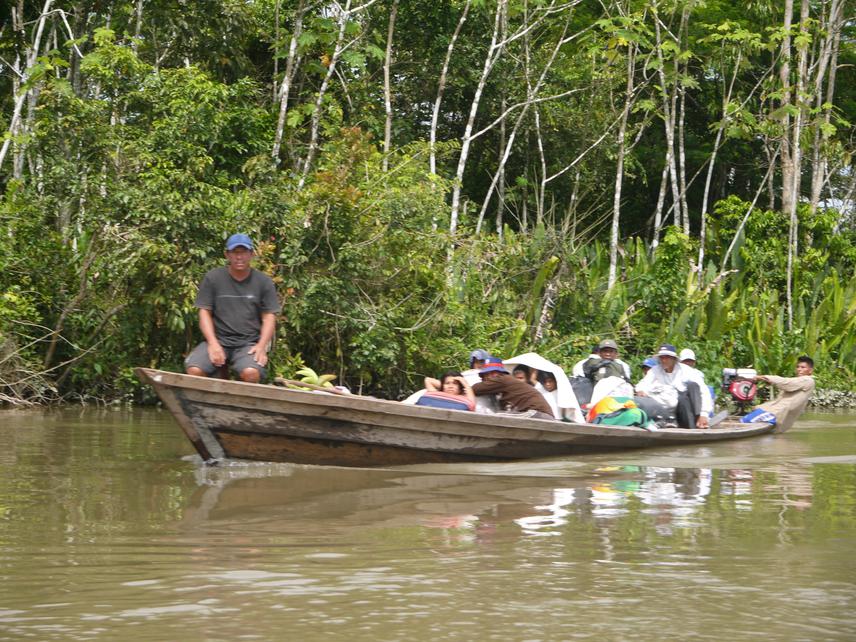Elizabeth Campbell
Other projects
30 May 2013
Distribution and Abundance of Boto, Inia geoffrensis and Tucuxi, Sotalia fluviatilis in Yarinacocha Lagoon, Peru
Our objective is to train tourist boat operators and native artisans of the Shipibo community of San Francisco and form a community-based tourism circuit promoting the sustainable observation of native species. Simultaneously, we will estimate the value of cultural and recreational ecosystem services of the lagoon.

The Boto (Inia geoffrensis) and the tucuxi (Sotalia fluviatilis) are both listed as data deficient in the IUCN red list. In other areas of the Amazon, tourism development has not been positive to the conservation of Amazon River dolphins. Some programs have included activities where they feed the animals, swim with them in their natural environment, causing possible scenarios of stress or habituation. This has not been the case in Peru. River dolphin watching has not developed or become overly popular.Our project intends to train boat operators and artisans from native communities adjacent to the lagoon. We will form an organization comprised of tourist boat operators, native guides and artisans trained in basic economy, basic biology and identification of most important flora and fauna of the lagoon, whale-watching guidelines, and data collection of aquatic wildlife sightings. Later, we plan to form a tourist circuit run by them. Boat operators have showed interest and openness in improving the way they use the lagoon.
Simultaneously, we will follow the travel cost method recommended by the Ministry of Environment, Peru to estimate the total value of tourism and recreation in the Yarinacocha lagoon. This will be done with questionnaires to the community and tourists that visit Ucayali, by knowing how many days they stay, how much they spend and what activities they choose we will be able to estimate part of the economic income the lagoon generates. We expect interactions with animals that exist in the lagoon to be positive, that ecosystem services are better appreciated, boat operators have skills and knowledge to generate complimentary incomes, and as a total, the lagoon grows and develops in an orderly manner.